Cerebral palsy (CP) is a group of movement disorders that appear in early childhood caused by abnormal development or damage to the parts of the brain that control movement, balance, and posture. Most often, the problems occur during pregnancy, childbirth or shortly afterwards.
Risk factors:
- Preterm birth
- Birth weight below 2 kg
- Asphyxia or hypoxia during birth
- Head trauma in early childhood
- New studies suggest that inherited genetic causes play a role in 25% of cases
Signs and symptoms include:
- Poor coordination
- Stiff muscles, spasticity
- Weak muscles
- Tremors
- Sensory problems
- Delayed milestones.
- Seizures
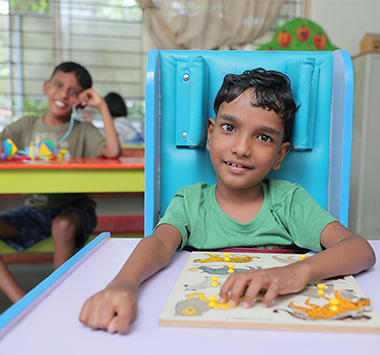
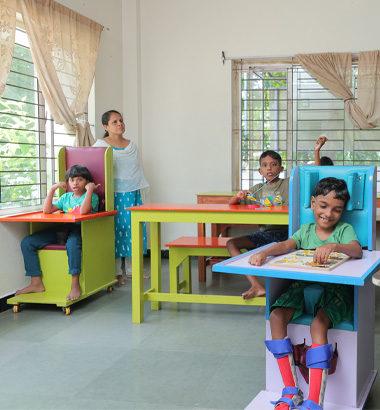
Training facilities:
- Early Intervention-Infant sensory and motor stimulation
- Neuro Developmental Therapy
- Sensory Integration Therapy
- Developmental Physical therapy
- Clinical Physiotherapy
- Lung-build up program- Conductive Physiotherapy
- Occupational therapy
- Nutrition and General health care supports
- Feeding training
- Visual Stimulation
- Speech Therapy
- Hydrotherapy
- Special Education
- Academic training under NIOS syllabus.
- EMG Biofeedback
- Virtual Reality Training
Autism, or Autism Spectrum Disorder (ASD), is a neurodevelopmental disorder that affects communication, social interaction and behavior that typically occurs in the first three years of life. Current studies suggest that in India, ASD is prevalent among 1 in 68 children in the 2-9 years age group. 80% of those affected are boys.
Risk factors:
- Brain shape and brain growth during development
- Infection during pregnancy
- Family history & genetics
- Having children later in life
- Multiple, frequent and preterm pregnancies
- Excessive screen time in early childhood.
Signs and symptoms include:
- Impairment of social skills like meeting, greeting and mingling
- Inability to communicate (verbal and non-verbal)
- Repetitive or restrictive behavior
- Abnormal response to sensations
- Delayed language, movement or cognitive skills
- Hyperactive, impulsive and/or inattentive behaviour
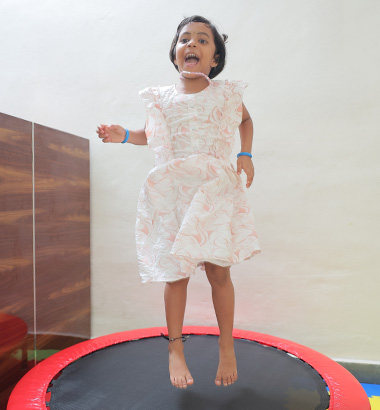
Training facilities:
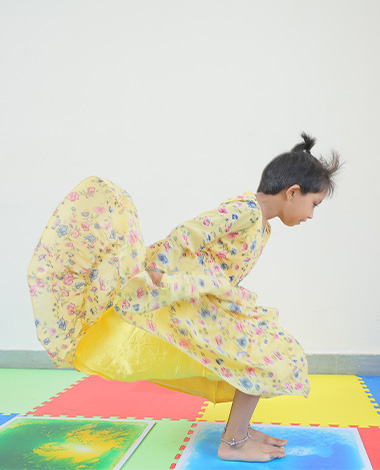
- Early Intervention-Infant sensory and motor stimulation
- Neuro Developmental Therapy
- Sensory Integration Therapy
- Developmental Physical therapy
- Clinical Physiotherapy
- Occupational therapy
- Nutrition and General health care supports
- Feeding training
- Visual Stimulation
- Speech Therapy
- Hydrotherapy
- Special Education
- Academic training under NIOS syllabus
- Virtual Reality Training
- Music therapy
- Dance movement therapy
- My Sweet Home Activities/ life skill training
- Social stories
- Activities of Daily Living
- Multi-sensory learning
Down syndrome is a genetic condition caused by an extra copy of chromosome 21, which can lead to developmental changes and physical features associated with the condition. This extra genetic material results in cognitive and physical symptoms, including developmental delays and disabilities.
Risk factors:
- Advanced age of the parents, (mother age 35, father age 40 and above) the time of conception.
- A family history of Down syndrome or another chromosomal disorder in a parent or sibling.
- A previous pregnancy with a Down syndrome fetus (carried full term or miscarried).
Signs and symptoms include:
- Characteristic skeletal and physical features.
- Mental retardation
- Speech and behavioral abnormalities
- Weak immune system and overall health.
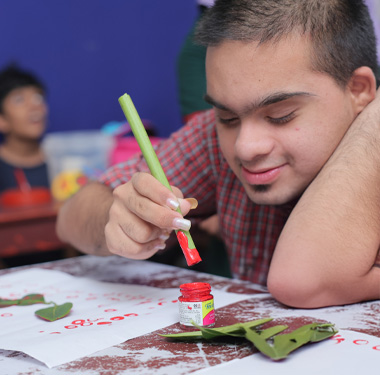
Training facilities:
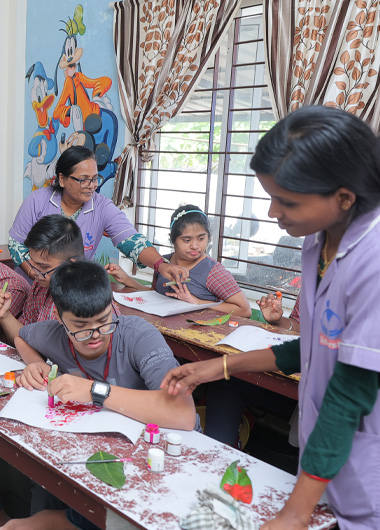
- Early Intervention-Infant sensory and motor stimulation
- Neuro Developmental Therapy
- Sensory Integration Therapy
- Developmental Physical therapy
- Clinical Physiotherapy
- Lung-build up program- Conductive Physiotherapy
- Occupational therapy
- Nutrition and General health care supports
- Feeding training
- Visual Stimulation
- Speech Therapy
- Hydrotherapy
- Special Education
- Academic training under NIOS syllabus
- EMG Biofeedback
- Virtual Reality Training
- Physical education
- Pre-vocation training
- Life skills training
- ADL training
- Curriculum training
- Functional academics
Multiple Disabilities is the simultaneous occurrence of two or more disabling conditions that affect learning or other important life functions. These disabilities could be a combination of both motor and sensory nature which causes such severe educational needs that they cannot be accommodated in a special education program solely for one of the impairments.
Risk factors:
- Prenatal causes like chromosomal abnormalities, viral infections, drug and alcohol use during pregnancy, malnutrition or physical trauma to mother.
- Perinatal causes which include lack of oxygen supply or injury to the baby’s brain.
- Postnatal causes like sever brain infections like Meningitis and Encephalitis, brain injury, drug reactions or exposure to toxins.
Signs and symptoms include:
- Physical disabilities - limitations in mobility, muscle control, or coordination. Examples include cerebral palsy, muscular dystrophy.
- ISensory disabilities- impairments in one or more senses, such as vision or hearing.
- Cognitive disabilities-impact on intellectual functioning, thinking processes, and learning abilities.
- Developmental disabilities-impaired language and communication skills, social interactions, and adaptive behavior as seen in Autism spectrum disorder (ASD) or developmental delays.
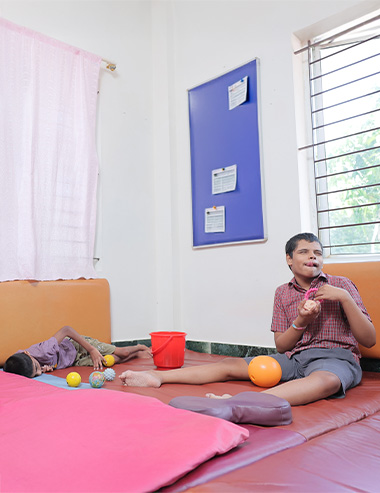
Training facilities:
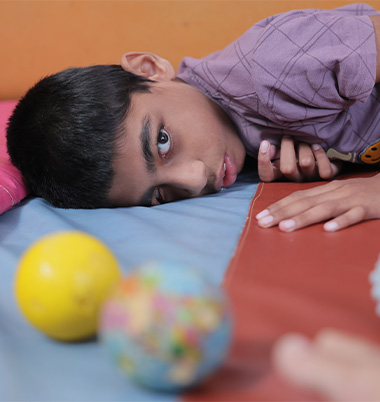
- Early Intervention-Infant sensory and motor stimulation
- Neuro Developmental Therapy
- Sensory Integration Therapy
- Developmental Physical therapy
- Clinical Physiotherapy
- Lung-build up program- Conductive Physiotherapy
- Occupational therapy
- Nutrition and General health care supports
- Feeding training
- Visual Stimulation
- Speech Therapy
- Hydrotherapy
- Special Education
- Academic training under NIOS syllabus
- EMG Biofeedback
- Virtual Reality Training
Learning Disabilities are problems that affect the brain’s ability to receive, process, analyze, or store information, hence slowing down the learning process. Learning disabilities do not have anything to do with a child’s intelligence.
Risk factors:
- Family history
- Poor nutrition
- Pregnancy-related factors
- Birth complications that block the flow of oxygen to the baby’s brain
- Head injury or illness, such as meningitis, in early childhood
- Health conditions such as cerebral palsy and Down’s syndrome often involve some extent of learning disability
Signs and symptoms include:
- Inability to focus
- Difficulty in reading, writing or spelling
- Difficulty in problem solving in subjects like Mathematics
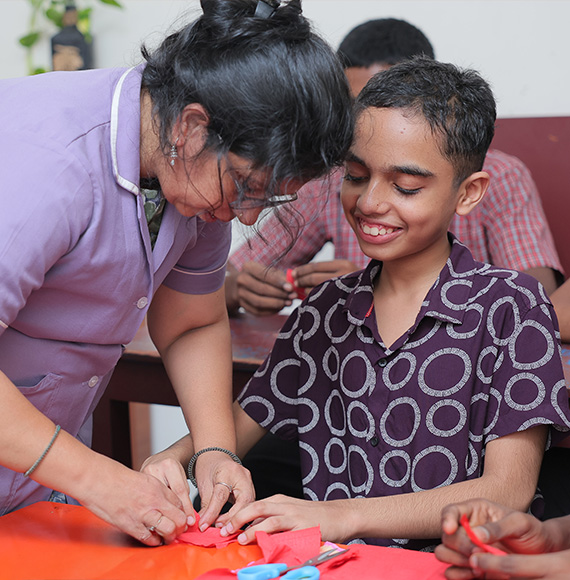
Training facilities:
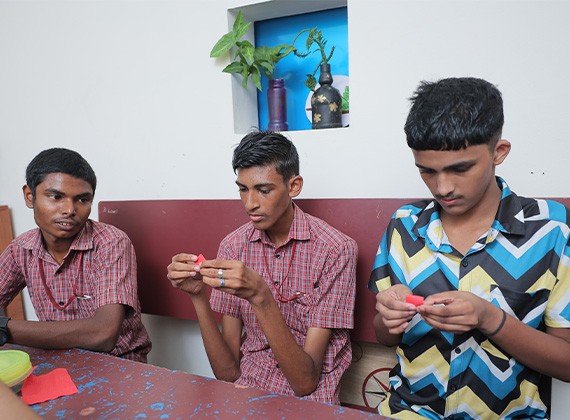
- Cognitive Behaviour Therapy
- Social Skill Training
- Life Skill Training
- Teenage Counselling
- Role play
- Yoga Therapy
- Dance & Music Therapy
- Art & Craft Training
- Academic training under NIOS syllabus
- Pre -vocational Skill Training